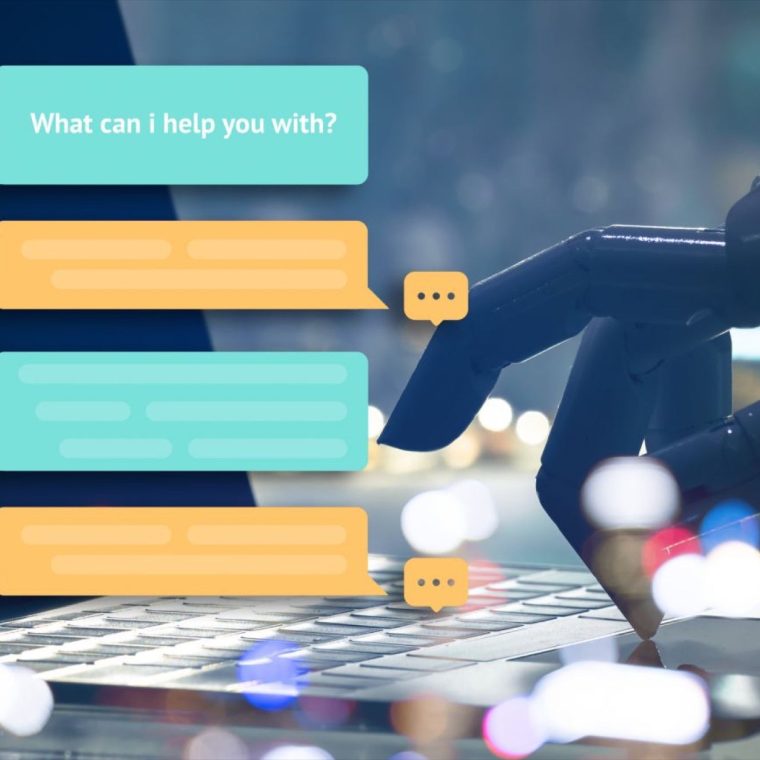Customer experience takes a comprehensive approach to how clients interact with a company throughout the purchasing process. It encompasses all of a customer’s interactions and touchpoints with a business, from browsing its website and shopping in person to post-purchase assistance and customer care. It’s a broad word intended to cover both consumer behavior and attitudes about a brand.
Brands are under more pressure to deliver a positive customer experience as its significance rises. Unfortunately, that also means they’re just one slip-up from a consumer choosing to go elsewhere. Businesses must create a plan that puts the needs and experiences of the customers first. Good news! Technology can be useful.
The concept of AI and chatbots altering the customer experience (CX) has been around for a while, but current developments in machine learning give the potential for businesses to extract new information and insights about their customers and so elevate the CX.
Delivering a great customer experience is a challenge that businesses face nowadays frequently. The ability of AI to run chatbots is often cited as the answer by many, as companies today frequently struggle to provide exceptional customer experiences. Artificial intelligence (AI) and its capacity to power chatbots hold the key to finding a solution for many. Brands may improve customer experience by focusing on AI as a strategy to differentiate themselves from the competition and deliver on promises.
The question is, what exactly is a chatbot?
A chatbot, short for “chat robot,” is computer software that mimics human conversation using text or voice communication.
These days, such programs can be altered and applied in various ways. These consist of:
- using smart speakers to converse with chatbots.
- Chatbots that work with smart home devices.
- popular chat and messaging apps including SMS, Facebook Messenger, WhatsApp, and LINE are used by chatbots.
So, in addition to interacting with a person (like a salesperson or a support agent, for example), customers can engage with software that facilitates quick answers. A chatbot can communicate with a customer by speaking or typing. More significantly, it can affect a customer relationship by matching expectations and reacting to requests more quickly.
Chatbots can potentially provide immediate responses around-the-clock, freeing up customer support employees to focus on more difficult inquiries using their emotional intelligence.
Brands can deliver on promises and differentiate themselves from the competition by focusing on AI as a tool to improve customer experience.
The way that people shop is being revolutionized by chatbots nowadays. Customers are receiving better services and experiences when choosing products, shopping, and other things.
2.14 billion individuals are making online purchases of products or services in 2021, according to Statista.
The growth of active chatbots is accelerating more quickly than ever. 100,000 chatbots were present in Facebook Messenger in 2017; within a year, that number jumped to 300,000 chatbots. This quick growth demonstrates how well human-chatbot interaction is getting better and will keep getting better over time.
If you need further proof of how helpful users find chatbots, check out the statistics below:
40% of millennials say they use chatbots on a daily basis.
Internet users claim that 24/7 support is the best chatbot feature (64%).
Millennials claim that employing chatbots on websites increases their likelihood of shopping there by 67%.
Both in business-to-consumer (B2C) and business-to-business (B2B) settings, AI chatbots can be specially designed to address a variety of particular business demands. The most typical corporate scenarios include:
- giving help for call centers. Customers can do actions like changing a password, requesting an account balance, or making an appointment without speaking to an agent by communicating with an AI chatbot via a call center application.
- giving business support. Chatbots can be integrated with a business’s back-end systems, such as customer relationship management or inventory control. Sales representatives may use an AI chatbot to swiftly obtain phone numbers, and a human resources staff can use it to speed up employee onboarding.
- assuming the role of virtual personal assistants. Consumers can use chatbots to speed up tasks like shopping for groceries or making travel arrangements from a mobile device, browser, or chat platform, helping them get through their daily lives. Chatbots are used by a variety of applications and hardware, including Google Home, Amazon Echo with Alexa, and Microsoft’s Cortana and Siri.
Examining Chatbot Best Practices
Setting customers’ expectations appropriately is essential to easing the transition from in-person encounters to digital ones, in addition to restricting the scope of a chatbot and directing customers through the experience. A few firms prefer to make their online interactions seem as genuine as possible. The issue emerges when the gimmicks are overly successful. People have different expectations if they initially don’t realize they’re speaking to a computer. The curtain slides back to display the computer when the chatbot runs into trouble and is unable to assist the customer. However, when appropriate expectations are made, clients are often not turned off by a chatbot’s low comprehension or capability, and their impression of the conversation is preserved.
Businesses need to have a strong fallback plan in place to provide customers further assurance. The chatbot might not be able to assist your customer, for instance, if they are overcharged for an order or receive the incorrect size. You need to have an effective mechanism to say, “I’m sorry,” according to Errol Denger, head of Adobe’s commerce program and strategic alliances. I’m afraid I can’t assist you right now. Let me connect you with a real agent who can. So that your clients don’t lose faith in the entire procedure, you then make sure the issue has been fixed.
Sending a customer to the appropriate channel for assistance in that situation offers a wonderful experience. Brands using chatbots should be aware that they may create a seamless consumer experience for them in a single channel, from browsing to making a purchase. According to Karen, one-click transactions on Amazon are a success, and other businesses that can provide the same frictionless, frictionless, seamless experience will see more engagement and conversions. We want to support retailers in that area.



